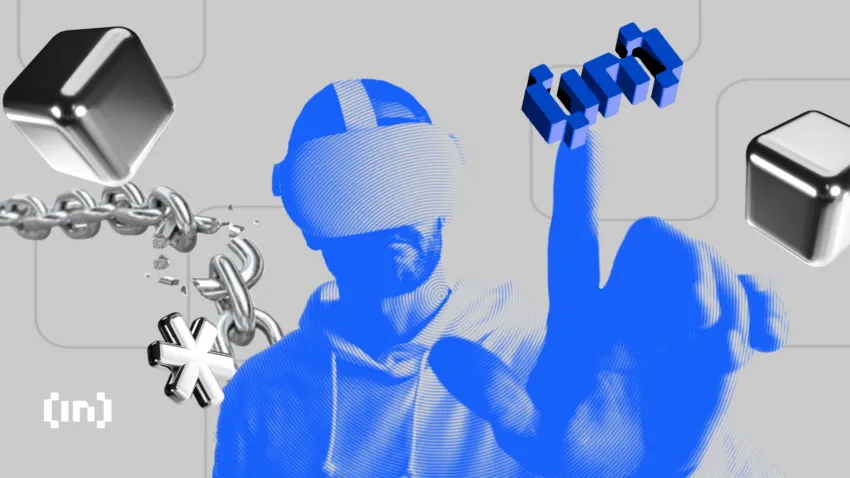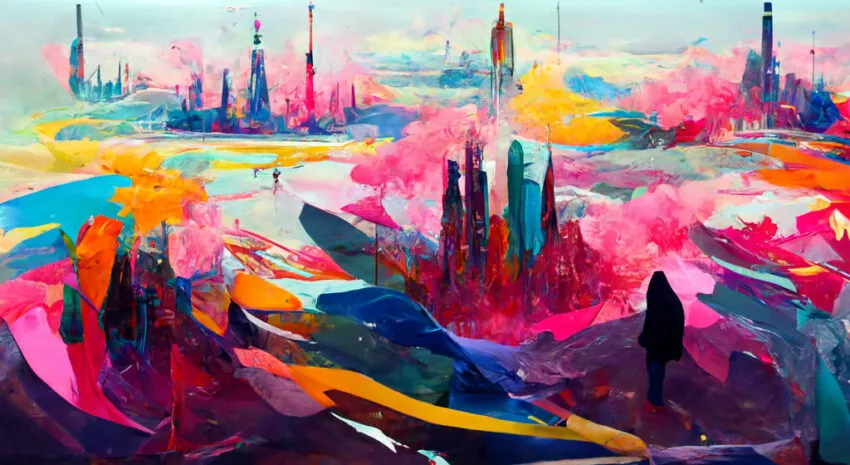In the technology world, 2022 has been the year of AI. In the last twelve months, we’ve seen an explosion of AI art, tool, writers, music composers, and AI-based skin analysis. But the undoubted star of the show has been the AI image generator. Across social media, vivid digital illustrations created by a computer and a simple word prompthave slowly replaced photos.
We’re already seeing this technology in the metaverse. Earlier this year, Mona rolled out an AI Material Designer that allows creators on its platform to create textures for objects without using code. Their CEO told The Block: “We are actively working to build and incorporate these types of tools into our creation pipeline for our community. We’re not too far away from users being able to generate assets and entire worlds using AI inside Mona.”
However, the reception to AI image generation has not been universally positive. This week, the Chinese government has efektivno zabranjeno the creation of AI-generated media without watermarks. Last week, Adobe began selling AI-generated photos as stock images, threatening creatives’ income. Artists have also revoltiran at computer-generated images reaching the top of ArtStation’s ‘Explore’ section.
According to its critics, the AI image revolution is here, and it’s coming for artists’ income.
One emerging fear about the use of metaverse AI concerns the manipulation of people’s photos. In a worrying case study, the technology magazine Ars Technica created a fictional man from a collection of only seven photos from a volunteer. With only this small dataset, they were able to put John in a series of compromising photos. This included a pornographic-style photo, a paramilitary-style uniform, and an orange prison jumpsuit. Whilst these examples have a slight uncanny valley appearance to them, a larger dataset, or more sophisticated AI, could produce far more incriminating images.
However, with video now taking up the majority of internet traffic, the biggest risk in the metaverse is not with your photos. As platforms like TikTok have exploded in popularity in recent years, the real jeopardy comes with fully realistic metaverse avatars. In a strange, dystopian near-future, this colossal mine of user-generated video could serve as a huge dataset. Used to create walking, talking representations that – for all intents and purposes – are indistinguishable from the real you.
Catfishing, in which people are lured into relationships with fictional online personas, could take a sinister turn. Instead of stealing a photo or two, why not postati them in a virtual world? As the globe spends more of its time online, identity theft is increasing. In the US, the Identity Theft Resource Center reports it increased by 36% in 2021 compared to 2020. Metaverse platforms will have to work hard to ensure the problem isn’t magnified in their AI-fuelled virtual worlds.

AI Images vs Creators
The most common complaint about AI-generated art is that it can severely affect an artist’s income and career. One artist who is not happy about people’s use of AI art generators is Polish fantasy artist Greg Rutkowski. Over the course of this year, Rutkowski has become the most popular inspiration for AI image generators. It’s easy to understand why. His instantly recognizable style has been used in various game artwork, including Dungeons & Dragons, Sony’s Horizon Forbidden West, Ubisoft’s Anno, and Magic: The Gathering.
In September, he reflected on his art being overwhelmed by AI imitations to Technology Review: “It’s been just a month. What about in a year? I probably won’t be able to find my work out there because [the internet] will be flooded with AI art… That’s concerning.”
For the metaverse, an entire business model could be at stake. One of the emerging areas of the metaverse economy has been the rise of digital fashion. High-powered brands that have already entered the NFT space include Burberry, Givenchy, Louis Vuitton, and Prada. In May, a virtual Gucci bag for use on Robox sold for more than the physical item. However, when a virtual garment can be produced near-instantly with the use of text prompts and AI, why do we need digital fashion houses?
Don Gossen, the founder and CEO of Nevermined AG, believes there’s a middle ground where big names can still provide inspiration or a leading role. “In practice, this could resemble something like the Warhol Factory, where the Artist (i.e. Andy Warhol) provides the avant-garde influence and can oversee the “workers” creating pieces in that artist’s likeness. What this requires is full transparency in the creation lifecycle, from inspiration through production to sales, with every contribution and contributor being registered and properly attributed in the value chain.”
Apparently, AI Can Drive Creativity
Nevertheless, we shouldn’t be so down on AI-powered content creation, says Yassine Tahi, co-founder & CEO of Kinetix, a company that allows users to create custom AI-generated emotes for virtual worlds. According to him, AI is becoming the operating system on which the metaverse will be built:
“Generative AI is an incredible opportunity for the metaverse. For us, it’s the biggest game changer and will drive adoption and engagement with virtual worlds… the benefits are twofold: professionals can iterate and build new experiences faster, and users can extend their skill sets and suddenly become virtual creators.”

For others, the AI train has already left the station, and it’s our job to take advantage. According to Sam Hamilton, Creative Director of the Decentralan Foundation, the technology could – and should – be used to create a better metaverse experience. “AI-generated images could be used to create more realistic and immersive virtual environments.”
In August of this year, Decentralan hosted its own Metaverse Art Week. The event featured AI-modeled buildings, an AI poetry reading, and even marketing visuals made using the technology. “When used in creative industries, it can increase productivity when used in the right way, but it won’t replace human artists. There will also be a lot of AI in the metaverse as NPCs and support bots. We already have text-to-video, and the text-to-3D model will obviously speed things up in terms of experience building.”
odricanje
Sve informacije sadržane na našoj web stranici objavljene su u dobroj namjeri i samo u opće informativne svrhe. Svaka radnja koju čitatelj poduzme na informacijama koje se nalaze na našoj web stranici strogo je na vlastiti rizik.
Source: https://beincrypto.com/ai-image-generators-paint-mixed-picture-metaverse/
